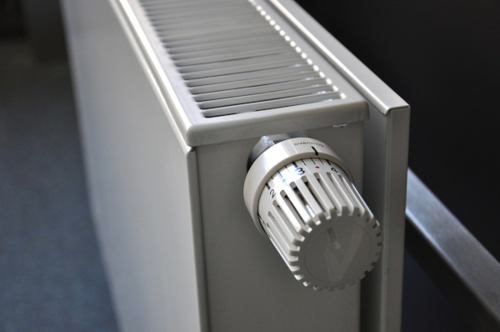Healthy homes in winter: small changes can make a big difference
29 October 2025
As winter approaches, small changes at home can help you feel more comfortable, save on bills, and support a healthy environment.
You don’t need to be a specialist to make small adjustments to your home heating and ventilation systems to make your home feel cosier and healthier. Best of all, many of these changes are free or low-cost, and will save you money.
Top tips
Here are some of our top tips:
Reduce your combi boiler flow temperature
Most boilers are set too high, increasing the cost of heating your home. Try turning down the temperature to 60°C and see if you notice a difference – if you do, you can always turn it back up again. Find step-by-step guidance from Nesta
Set your thermostat lower
Set your thermostat to the lowest comfortable temperature for your needs. For most people, this is between 18°C and 21°C. One caveat: if you’re over 65, have health conditions, or have children under 5, take extra care to make sure your home is warm enough.
Keep your boiler or heat pump serviced
We recommend getting your boiler or heat pump serviced every year to make sure it’s running properly. This will help make sure your system is running at its most economical.
Install a smart meter
Did you know that energy suppliers install smart meters at no extra cost? Smart meters provide automatic readings to your supplier, making budgeting easier.
If you have a smart meter, you could also make the most of tariffs that offer cheaper electricity, for example, by offering off-peak rates. When you contact your supplier, check your tariff and ask whether there are cheaper or more appropriate tariffs for your lifestyle.
Contact your energy supplier to see if you can get a smart meter installed.
Get more heat out of your radiator
Radiator foil, also sometimes known as heat reflector foil, is a reflective sheet typically made from aluminium and backed by insulating material (different from kitchen foil). It’s designed for positioning directly behind your radiator, to bounce heat back into the room. Remember to bleed your radiators for better heat circulation.
Fix draughts around the home
Watch to see if your curtains are moving when the window is closed, or if you can hear noise on windy days. Look for gaps around windows, doors, pipes and floors.
Different material may be required depending on the gaps – like foam strips, which are cheaper, or metal or plastic strips with brushes or wipers attached, which last longer but cost a little more.
Find out more about draught proofing at Energy Saving Trust.
Don’t forget to air your home
It might seem counterintuitive, but good ventilation is vital for a healthy home. Try to open windows every day when you are home and let air through to help prevent mould and damp.
However, after your shower, don’t automatically open the bathroom door to the rest of the house. Steam from the bathroom can, over time, cause mould to build up. If you have good bathroom ventilation, keep the bathroom door shut, the window open, and the extractor fan on for 10-15 min or until the steam has dissipated.
Benefits of small changes
Small changes can make your home healthier to live in.
Find out more about how we can support you or your neighbours during winter.
If you know someone who is struggling with bills, see our advice about free Warm Home Packs and other low-cost solutions you can implement at home.

Share this
Up to: October 2025
Updated: 29 October 2025
 Stay up to date! Make sure you subscribe to our email updates.
Stay up to date! Make sure you subscribe to our email updates.
